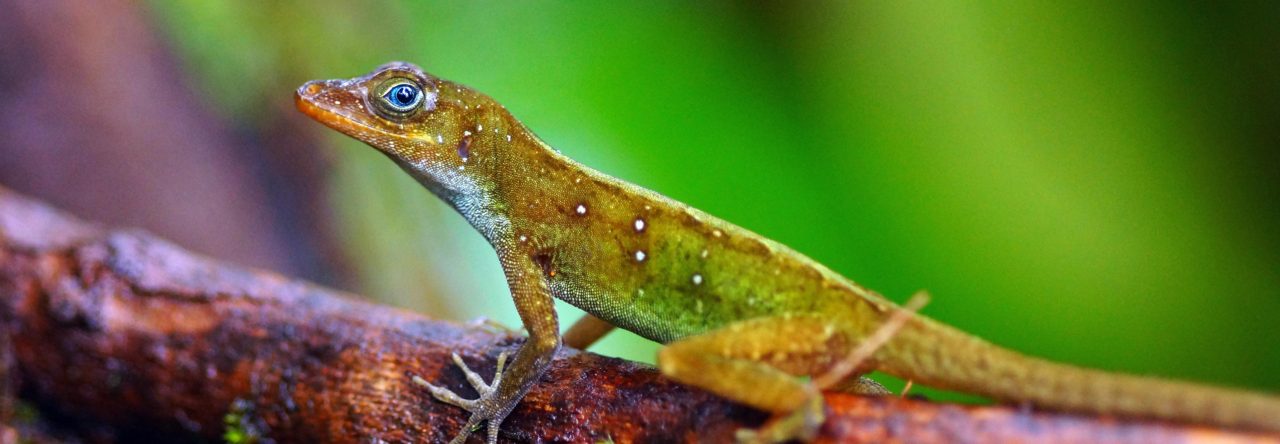If you love anoles and have visited the Dominican Republic, chances are that you’ve spent some time on the Recodo Road. Initially made famous by Ernest Williams and his students, this road running north of Bani into the foothills of the Cordillera Central remains one of the most interesting anole hunting localities in the DR. My lab is particularly interested in the interactions between three types of trunk anoles in this region: Anolis brevirostris, A. distichus ignigularis, and A. distichus ravitergum (we’ve recently suggested that the latter two may deserve elevation to full species status and Luke covered this topic in a previous blog post). We’re currently using molecular genetic and ecological methods to investigate the possibility of ecological speciation among these forms.
I thought it would be fun to share some recent developments along this classic anole hunting locality. One feature of the Recodo Road that is both a blessing and a curse is the need to cross the Rio Baní. Because there are no bridges, crossing the river requires driving through the river itself. This generally isn’t a problem with a good 4×4, but getting stuck in the middle of the river is somewhat of a right of passage (the route can also be completely impassable after heavy rains). Shabby bridges made of sticks are often constructed for pedestrians and motorcycles, but these tend to be somewhat shaky and wash out each time the river floods. This winter, we found that some local entrepreneurs have constructed a somewhat more substantial stick bridge and have been charging a modest toll to motorcyclists interested in using it. The photo on the left of the image above depicts the toll collector and his modest gate. We were told that motorcycles were asked to donate what they could, rather than being charged a fixed rate. The photo on the right of the above image shows where we cross in our 4×4.








